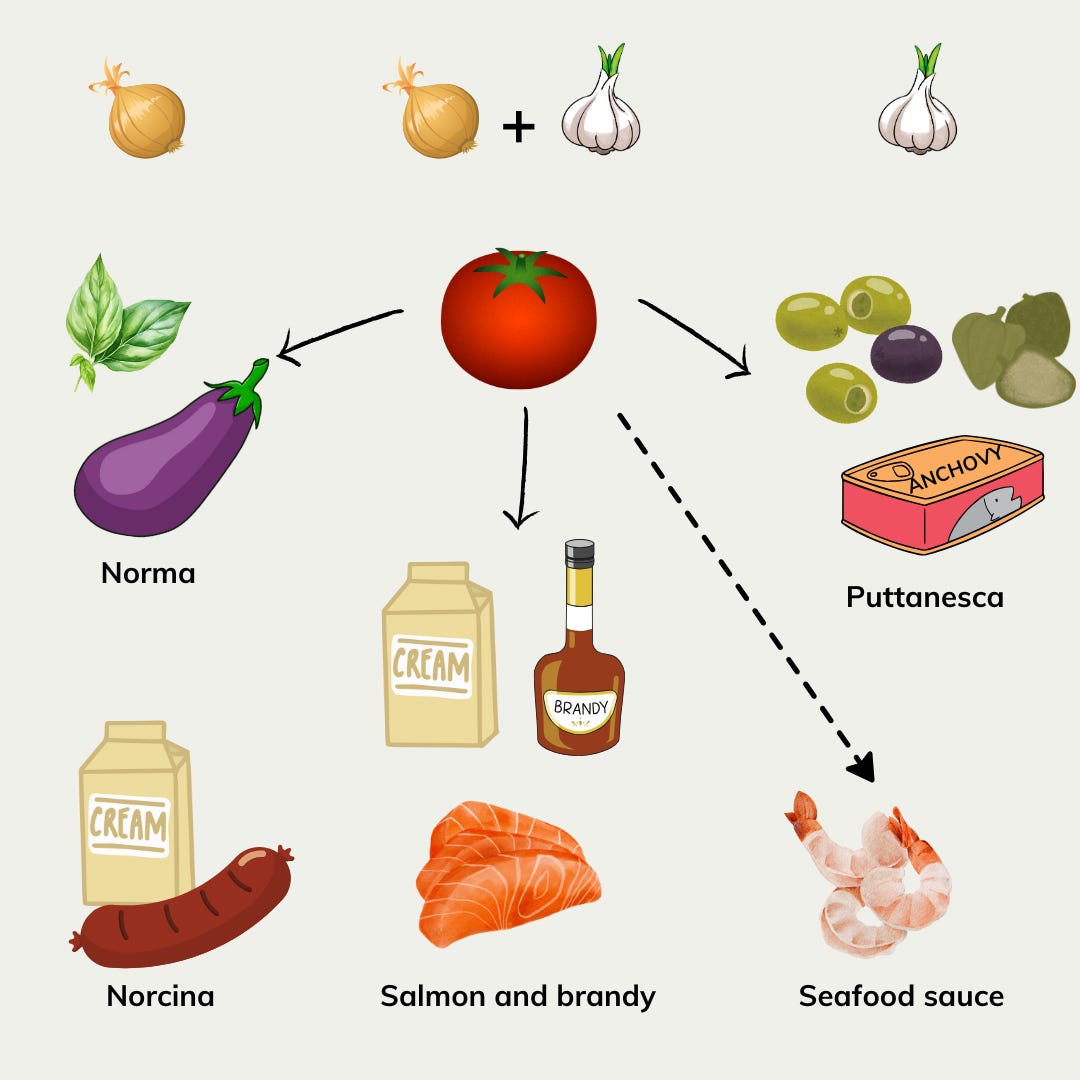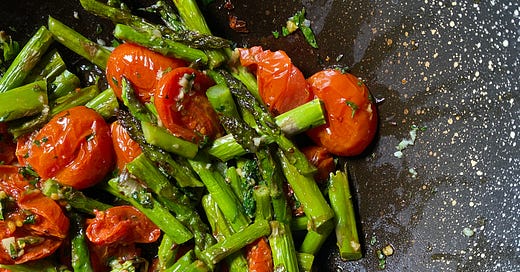After teaching food and cooking for almost 23 years, I can’t count the times I have been asked how to make a good pasta sauce. Questions span from how to reproduce classics such as ragù or amatriciana, to how to create a quick and delicious dinners when there is hardly anything left in the house.
Pasta lends itself quite well to that sort of magic, don’t you agree?
The secret is in the detail
Pasta is such a fundamental part of our culture that we Italians tend to think that it’s easy to make, often forgetting that we have had millennia to practice.
While much of the world cooks pasta, I’ve often been told that pasta in Italy simply tastes better. Does that mean it’s not as easy to replicate as it seems?
One obvious reason for the superior taste is the availability of high-quality ingredients. If you don’t have access to good extra virgin olive oil, authentic Parmigiano or Pecorino cheese, and proper fresh or canned tomatoes, even a simple tomato sauce might not live up to its full potential.
The second more important factor is that the fine details of certain cooking techniques don’t easily travel across geographical borders.
My favorite example of culinary misunderstanding is the statement of a young man I met when just arrived in the USA for my Ph.D:
“I don’t eat pasta because I don’t like ketchup”.
I want you to know that I did not judge, it was my first trip abroad and I was having a wonderful time.

From your mind to your dinner
To reproduce a good recipe as well as to create one, you need to determine your expectations about its texture and flavor profile. This might depend on your previous experience of the recipe: “that cacio e pepe in Rome was so intense and creamy…”.
You might also have a specific plan about the recipe: “I’m in the mood for a really light and bright vegetarian pasta”.
The first step is quite obvious, but how to connect your imagination or experience to the results of a recipe it’s often not.
How many times has anyone thrown a few random ingredients into a pan and obtained a really fantastic dish?
How to make the right choices
As I always mention during my cookery classes, there are no random choices in cooking. In order to succeed, you need to understand how even the simplest ingredient and technique will influence a recipe and adjust according to your preference.
Last summer I have been interviewed by the brilliant Tom Webster of “Cooking with strangers” . We went through this specific process with a class focused on 3 pasta sauces for fresh tonnarelli noodles.
How to buildup a sauce: alliums
The majority of pasta sauces in Italy include garlic and/or onion sauté in olive oil or butter. The flavor profile of a sauce can vary significantly depending on whether you use garlic only, onion only, or a combination of both.
Here's how each impacts the flavor:
Garlic Only
Flavor Contribution: Garlic provides a sharp, pungent, and slightly spicy flavor when lightly cooked. It easily burns in which case it becomes bitter and indigestible.
Impact on Sauce: It works well in recipes where the intention is to highlight the bright, intense, or rustic qualities of the sauce (e.g., pasta with seafood, pesto, puttanesca).
Onion Only
Flavor Contribution: Onion brings a sweeter, milder, and more rounded flavor compared to garlic. Depending on how it's cooked in sauce, it can be lightly sweet and crisp (sautéed briefly), or soft and caramelized (when cooked longer and deglazed with white wine).
Impact on Sauce: Onion-only sauces tend to have a softer, sweeter flavor profile. The sauce feels more balanced, without the sharpness of garlic. This works well for creamy or rich tomato-based sauces where the goal is a subtle sweetness and depth (e.g. Norcina, ragù bianco, Norma).
Combination of Garlic and Onion
Note that using both garlic and onion together is not common in traditional Italian pasta recipes. While it may seem natural to combine them for extra flavor, doing so can blur their distinct characteristics. Of course, there are exceptions, and some recipes may be prepared with either one. But more often than not, the choice is deliberate: one allium at a time, allowing its unique flavor to truly shine.

I love garlic with seafood sauces, but the combination of the two in this retrò creamy salmon and brandy sauce really makes the dish.
The no waste sauce
Do you remember our sweet farm dog Google? like everybody else in our family she was a gourmet dog. She loved figs and blackberries which she cleverly picked from the brambles. Also, she was always in for a sip of beer at sundown when we finally had time to sit on the terrace and breathe after another busy day.
At mealtimes she often stationed outside the kitchen door ready for leftovers like these crunchy asparagus stems.
I don’t have a dog or a garden anymore, but I still try to use everything that is in the refrigerator or the pantry to make a meal. Days ago all that was left was a bunch of asparagus and a bag of Piccadilly (small plum) tomatoes. I transformed them into a simple but delicious pasta sauce with just garlic and the right technique to enhance flavors. I hope you will enjoy it!
Penne pasta with roasted plum tomatoes and asparagus
Keep reading with a 7-day free trial
Subscribe to MADONNA DEL PIATTO to keep reading this post and get 7 days of free access to the full post archives.











